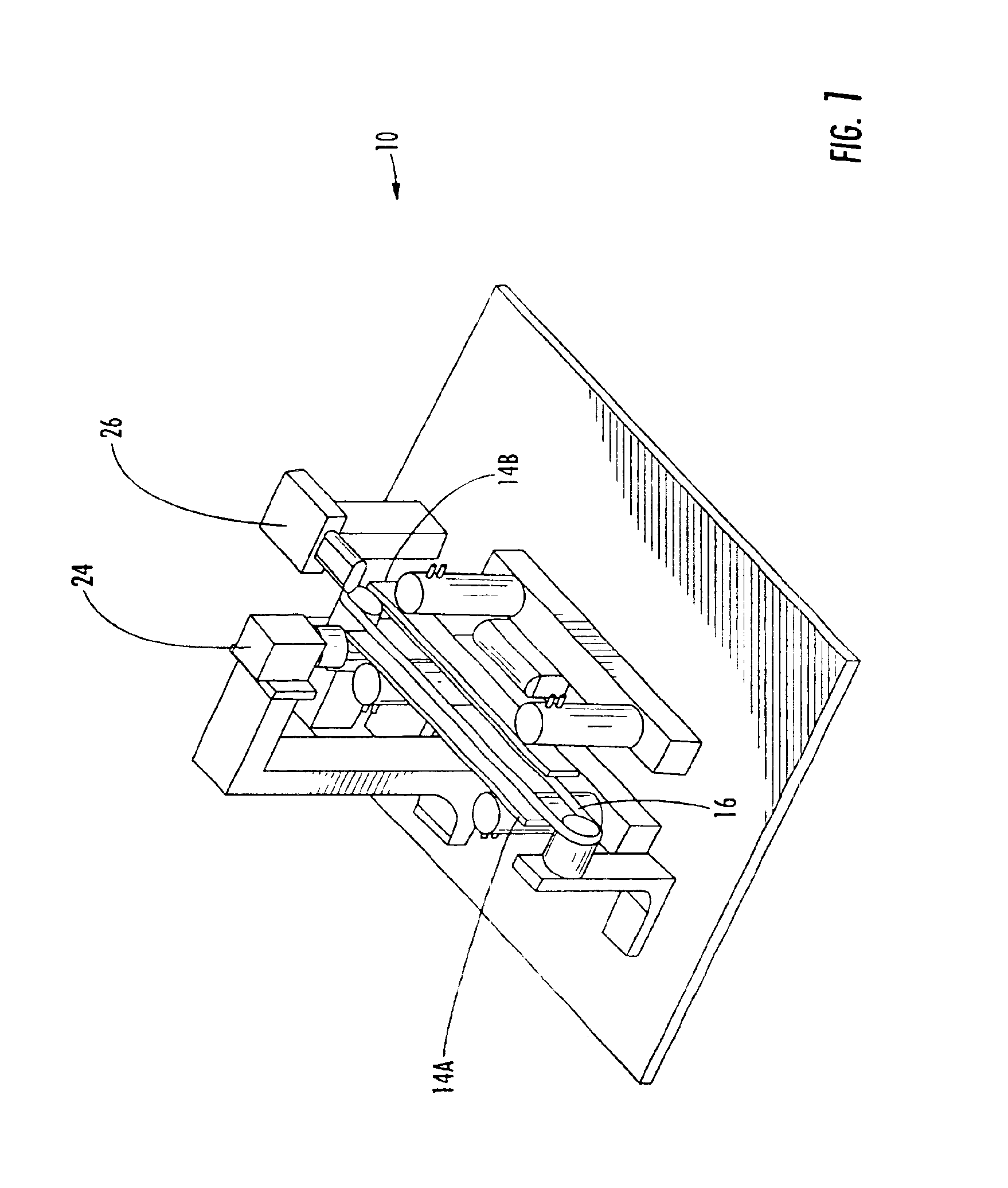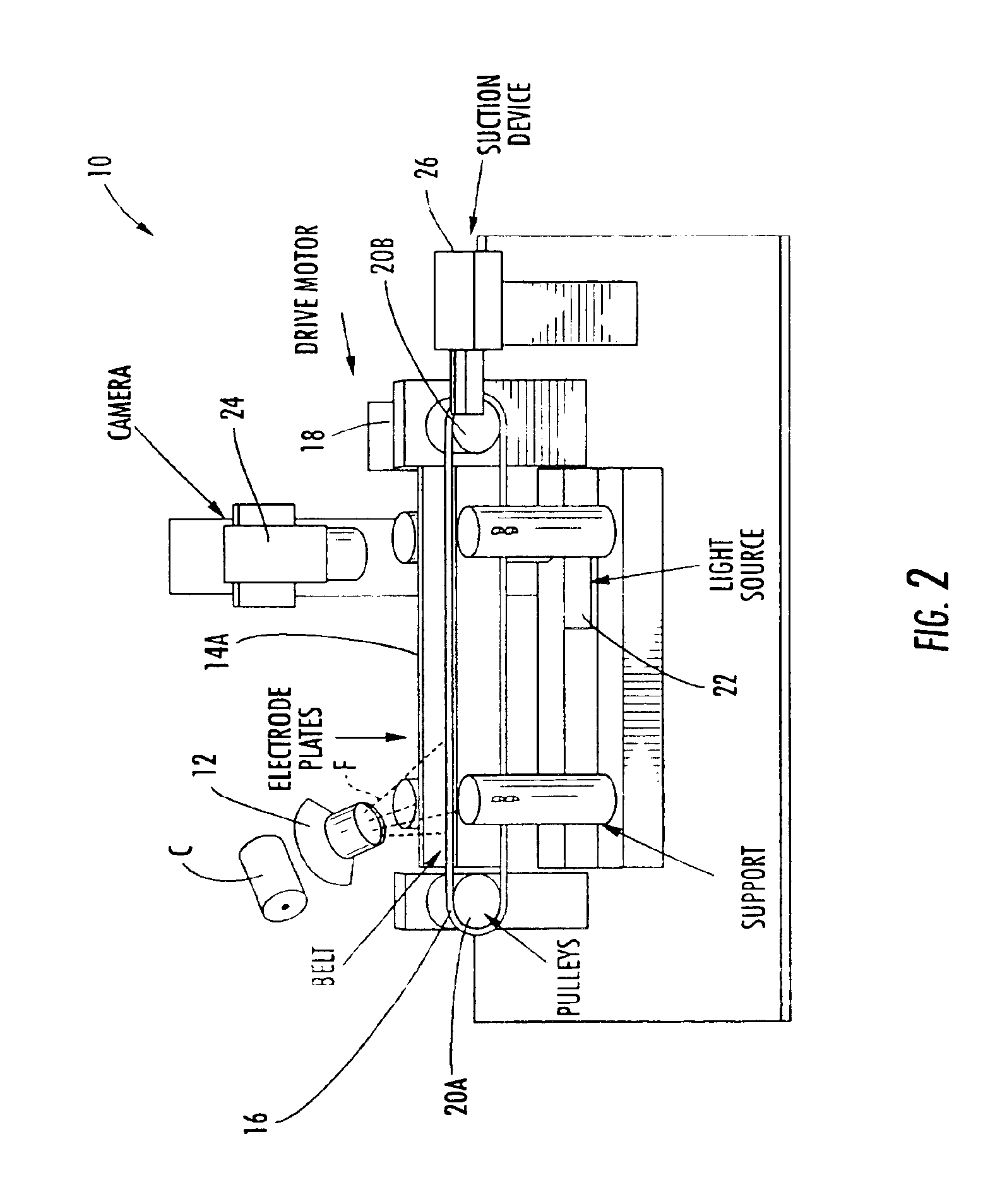Apparatus and method for precision testing of fiber length using electrostatic collection and control of fibers
a technology of electrostatic collection and fibers, applied in the field of fiber sample testing, can solve the problem of fibers staying longer on the belt, and achieve the effect of greater fiber length measurement accuracy and more precise measurement of fiber length
- Summary
- Abstract
- Description
- Claims
- Application Information
AI Technical Summary
Benefits of technology
Problems solved by technology
Method used
Image
Examples
Embodiment Construction
I. General Description
[0036]Referring to FIGS. 1-8, a good overview of the behavior of the apparatus, general designated 10, and the sequence of actions for individual parts can be developed. A fiber F, which has been individualized by a combing roll C, is directed by means of a feed chute 12 into the apparatus 10. As the airborne fibers F float down they come into the region between two opposing electrode plates 14A, 14B. The two opposing electrode plates have an electrostatic field between them that creates an induced charge on the fiber. As the fiber moves downward it becomes attracted to a belt 16, which is driven by a motor 18 connected to pulleys 20B. As the movement of belt 16 continues onward it takes the fiber F along with it until it reaches a region of image taking. At this place between the two opposing electroplates a light source 22 is projected upward from underneath belt 16. Light source 22 creates a back lighting condition for the fibers F in this region, and allows...
PUM
 Login to View More
Login to View More Abstract
Description
Claims
Application Information
 Login to View More
Login to View More - R&D
- Intellectual Property
- Life Sciences
- Materials
- Tech Scout
- Unparalleled Data Quality
- Higher Quality Content
- 60% Fewer Hallucinations
Browse by: Latest US Patents, China's latest patents, Technical Efficacy Thesaurus, Application Domain, Technology Topic, Popular Technical Reports.
© 2025 PatSnap. All rights reserved.Legal|Privacy policy|Modern Slavery Act Transparency Statement|Sitemap|About US| Contact US: help@patsnap.com



